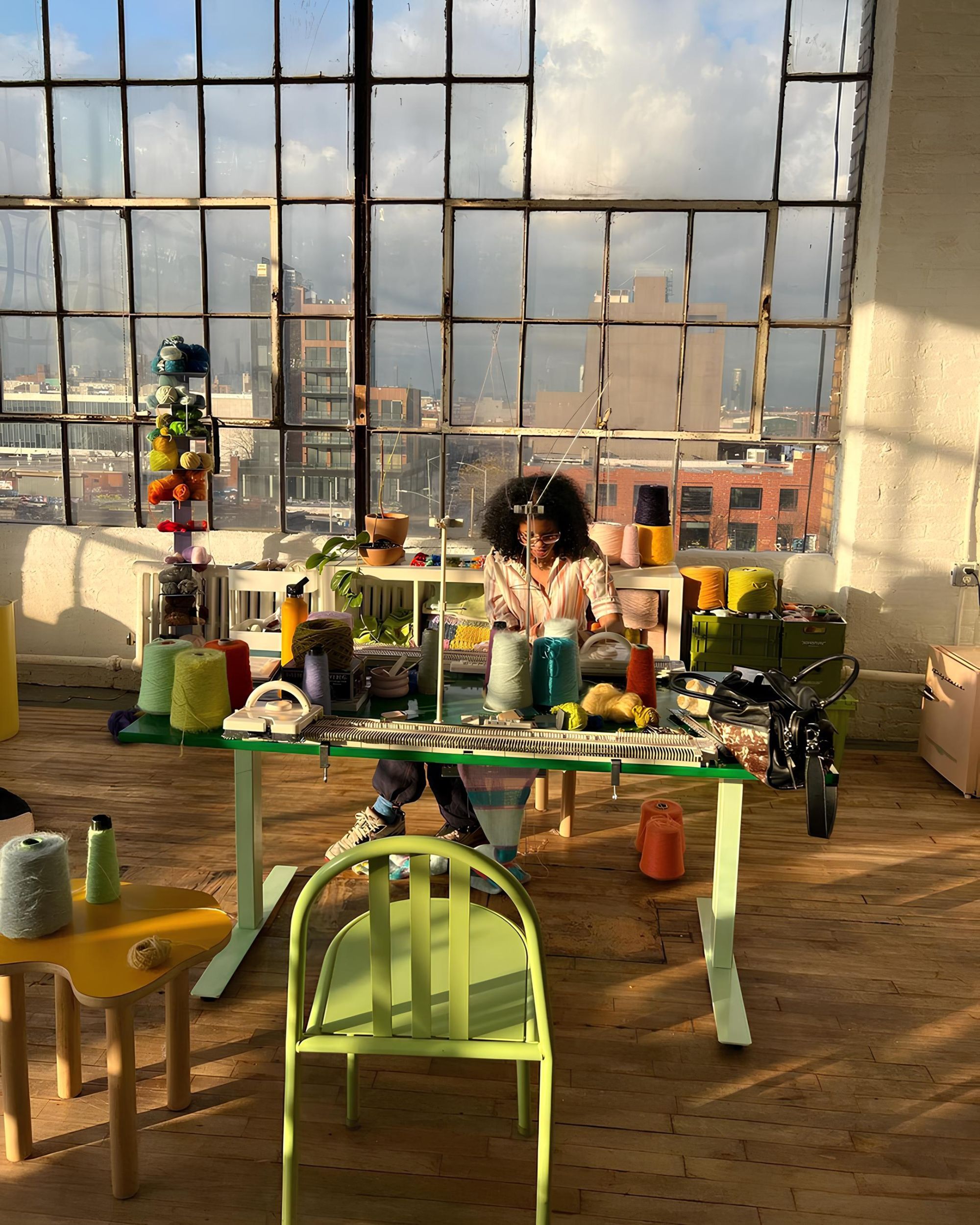
How manifacturing became a Gen Z marketing player Fashion factory videos are all the rage on TikTok
When YouTubers Kailee McKenzie and Avery Ginsberg launched their fashion brand Staatsballet, the content they posted on their social pages followed by hundreds of thousands of users underwent a drastic change. No longer just vlogs of their days around New York and fit checks, the two began to document the behind-the-scenes of their new work as fashion designers, from the research process to production. The same happened to Lindsay Vrčkovnik, founder of the knitwear line Verconiik, or to Kylie Jenner, owner of Kylie Cosmetics and Khy, and Bella Hadid, who just launched the Orbella perfumes. Whether it's an independent brand led by a former micro-influencer couple or a cosmetics empire built on the popularity of a Californian top model with millions of followers, the communication of each of these companies has focused on transparency to win over their clientele. These are very different business models, yet for each of them, including the consumer in the production process has benefited sales and social engagement. Discovering the secrets of manufacturing is now one of Gen Z's fetishes, a phenomenon that on TikTok is expressed through informative videos with millions of views that have led to the success of creators like Labwearstudios and Garment Circle.
Like attention to sustainability, traceability and transparency have become a new status symbol. In the oversaturated influencing market, wearing a logo no longer makes a splash, let alone showing it: the rise of quiet luxury has taught consumers the importance of craftsmanship and the qualitative value of garments, leading to the popularity of unusual creators like Tanner Leatherstein. Volkan Yilmaz is a Turkish leather expert who has reached an audience of one million followers on TikTok by deconstructing, analyzing, and comparing various types and brands of leather accessories. With very simple explanations, Yilmaz demonstrates how to recognize the true value-for-money of the items examined, from classic Louboutin stilettos to Jacquemus' Chiquito. Interviewed by the New York Times, he explained that he started posting content on TikTok to answer his friends' most pressing questions. "People don't know much about how leather is bought or used and are suspicious of the markups on luxury leather products," said Yilmaz. "I wanted to show that the price is not about the leather or materials used, but mostly about the status associated with a brand. Many people automatically assume that if a product is expensive, it must be of quality."
@tanner.leatherstein Christian Loutboutin surprised me... #christianlouboutin #christanlouboutin #christianlouboutinshoes #tannerleatherstein #leatherexpert #shoetok #luxurytok #leathertok #fashion #luxuryfashion #fashionreview #leather #cristianlouboutin #heels #luxuryshoes original sound - Tanner Leatherstein
While Leatherstein's first job was as a leatherworker (his family had a tannery in Turkey, where he made his first jacket at the age of 11), and later as a content creator, on TikTok and Instagram there is a whole series of influencers who became designers only after their success. We can trace the first marketing content focused on production, rather than the product, back to 2020, the year the Covid-19 pandemic began. In lockdown, influencers and creatives with the dream of starting a brand finally found the right moment to devote themselves to their passion. New brands popped up everywhere on social media with the subtitle of local business, and since social distancing rules made it impossible to create appealing editorials that encouraged purchases, the one thing each of them could rely on was telling the creation process. Meanwhile, there was a burgeoning collective passion for outdoor activities due to the government-imposed lockdowns in the early months of the pandemic, leading to the gorpcore aesthetic. Never before has streetwear had to prove its technical qualities to be considered fashionable. Following in the footsteps of Carhartt, Arc'teryx, and The North Face, luxury houses and newly founded brands had to learn to prove they were truly practical, sustainable, and high-performing. As the glass ceiling of Made In Italy shattered, revealing how often brands circumvented the system just to label a product as Italian when it only had an Italian button, the supply chain sector entered a crisis. Many brands then decided to internalize their operations, a practice that led them to "discover" the advertising possibilities lying within factories. Exploratory videos, press trips - the Shein case remains famous - and content focused on the hands of artisans behind the brands replaced extravagant editorial videos and idyllic vacations for journalists. In no time, everyone, from luxury houses to emerging brands, from influencers to followers, shifted their focus from the product to the production.
In 2024, the passion for fashion item production facilities interests a vast and varied audience, but especially Gen Z on TikTok. The reason, as explained to Vogue Business by the founder of Imprint Genius, Isaac Hetzroni, is simple: like the favorite formats of TikTok users aged 18 to 25, such as Get Ready With Me and video routines, content exploring how a clothing collection is produced taps into the innate curiosity of the most skeptical generation in history. "The interest is amplified in this case," adds Hetzroni, "because it shows how to start a brand, which is the dream of many, making it seem possible and truly within reach." With the difference that the average TikTok user does not have the popularity of Kylie Jenner, nor the starting point of the founders of Staatsballet, showing the process of creating one's own brand has become the best way to gain customer trust, who, seeing Bella Hadid in her office, among moodboards and cute outfits, convinces themselves they resemble her at least a little.














































